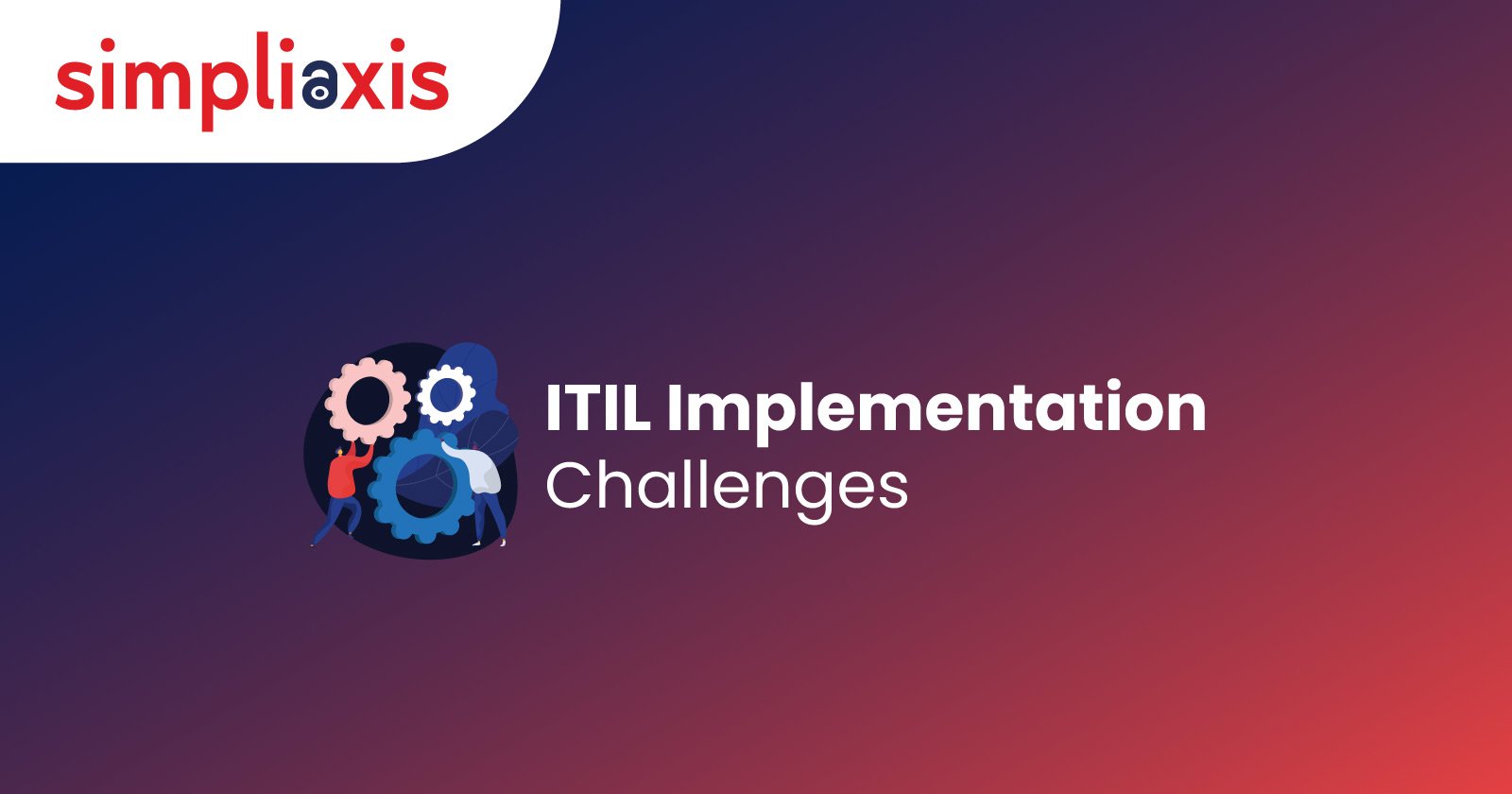Organizations develop problem-management strategies, but in many organizations, these strategies are reactive rather than proactive. This means the organizations always handle the problem after it occurs instead of being prepared for them. They cannot handle emergencies promptly because of their unpreparedness. This is because they look for short-term or immediate solutions to the problems rather than developing long-term solutions to prevent the issues from occurring. The answer is to move from reactive management to proactive management and take maximum advantage of various tools in today's technologically advanced world. The Information Technology Infrastructure Library (ITIL) is one such tool. Let us first know about ITIL.
What is ITIL?
The IT Infrastructure Library (ITIL) is a framework for managing IT services that outlines the best practices for delivering IT services. The ITIL framework has been developed to standardize the organization's selection, planning, delivery, maintenance, and complete lifecycle of IT services. ITIL aims to boost efficiency and reach predictable service delivery. The structured method of ITIL toward IT Service Management (ITSM) helps organizations manage risks better, strengthen customer relationships, develop cost-effective practices, and create a robust IT environment that encourages scaling, change, and, more importantly, growth. With the implementation of the ITIL framework, IT administrators can become business service partners instead of just offering support at the backend.
In simple terms, ITIL is a set of guidelines and is better not implemented as rules. Since each organization has its specific parameters and qualities, it would be better for the organizations to adapt to only those best practices of ITIL that are compatible with the organizational priorities. Implementing ITIL is not child's play because it impacts your organization's entire spectrum, including your business, IT department, and ongoing projects. Here we will look at the major challenges in implementing ITIL in any organization.
Challenges in implementing ITIL
ITIL is a systemized framework with an approved set of ITSM principles and principles. It acts as a guide to IT services. However, the challenges faced during its implementation make it difficult for the organization to adopt it smoothly. These challenges are as follows.
1. Lack of support and commitment from the leadership
This is one of the biggest challenges to ITIL implementation. The top management intends to approve the ITIL framework but does not support it with proper workflows and strong sponsorship. The executive management often cites the lack of financial resources as the reason for the non-implementation of ITIL. However, since implementing ITIL is a major decision, the executive management must come on board and the IT manager has to make efforts for it. The best way to do this is to start educating all the stakeholders about its advantages and the easier ways to implement it. But there is a flip side to this too. Waiting for the top management's approval may delay the process, particularly when time and resources are involved. With no knowledge of the ITIL framework, the management would have little idea of its implications and why it needs to be implemented. The best course here is to get an executive sponsor to reduce dependency on the executive leadership.
2. Lack of vision
As said earlier, organizations must adopt only those ITIL Management practices and principles that are in line with the organizational priorities. It is not necessary that the entire organizational structure or practices need to be changed. Therefore, it is important that those areas are carefully identified where the need for change is there and the method of change is decided before ITIL is actually integrated into the existing structure. The goal must be decided and then implemented based on that goal. There should be a clear vision of what is intended to be achieved by implementing the ITIL framework.
3. Resistance to change
This is a universal human problem and one of the toughest challenges. People are so used to working in a particular way that sometimes even a mention of change upsets them. It is difficult to ask people to give up what they have been doing for a long time and adopt something they know nothing about. Since ITIL brings about a broad organizational change, there is more likelihood of facing resistance. Different departments, teams, and even individuals would prefer to maintain the status quo than implement anything new. So, it is important to prepare all concerned for the change that is to come about. Documenting and releasing the changes or providing theoretical inputs may not suffice. Proper communication and training for everyone would play an important role in implementing the ITIL. This will help everyone to prepare for adopting the change and would lead to better collaboration. This will also improve the coordination between the teams and they would be able to interact in a better way because all stakeholders would be well-prepared to embrace the change.
4. Project culture
Some organizations take ITIL as a project, which is the wrong way of adapting to the ITIL framework. It is not a project that should be completed within a given timeframe. ITIL is a set of processes that need to be constantly improved. It does not have a completion date like projects. If the organization thinks that it has "done" ITIL and can now move to something else that it feels is more important, this approach does not deliver and is bound to fail. The desired changes in the organization would not come about and the whole time, effort, and resources utilized for implementing ITIL would go to waste. So, the ITIL framework has to be taken as an ongoing task that needs improvement at every stage.
5. Waiting for the right time
There is never a perfect time to implement processes and policies, and it does not make any sense to wait for the right time to take action related to policies and procedures. They must be driven into projects and continuously improved to achieve the best outcomes. What is important is to focus on the relevant things and those that would add value. It will not benefit the organization if it goes for the low-scoring processes and then keeps improving them in the hope that they would provide maximum benefits after improvements. It is the same with ITIL. Therefore, the organization must select the best people to design, change, control, or pilot the process for implementing ITIL. It would be all the more beneficial if they had experience in implementing ITIL and had seen the negative effects of some of its practices. It is always better to implement ITIL incrementally so that sustainable improvements can be achieved and a positive momentum may be created.
6. High investment
ITIL implementation requires large amounts of financial investment and human resources investment. This makes the task of bringing the top leadership on board more difficult. Convincing them about the Return on Investment (ROI) becomes more difficult. It is tough to show them the long-term gains. But they would do well to remember that although ITIL may not offer an immediate return on investment, it has a proven track record of depicting long-term efficiency resulting in a better return on investment.
7. Many process limitations
It is said that too many business process limitations in ITIL affect the organization's overall workflow. But if it is customized according to the organization's requirements and implemented correctly, the framework's best practices are tailor-made solutions. This balances any imposed limits, special procedures, and unnecessary restrictions working against the requirements of the business. As a result, the infrastructure's reliability and security get better without compromising efficiency.
8. The complexity of the framework
There is a huge amount of information and material in the latest version of ITIL that should be understood and implemented to get the best results. And the IT managers are not comfortable with that. They are apprehensive about consuming so much information and then applying it. ITIL practices must be continuously upgraded to make them profitable assets. If they are not constantly upgraded, this will result in losing the assets as they will no longer serve the purpose for which they have been adopted. So, it is a challenge for IT managers to keep abreast of the latest updates and apply them to the existing framework.
Undoubtedly, implementing a framework like ITIL will always have a few challenges. However, implementing ITIL will certainly be worthwhile in the long run. If implemented rightly, it may bring enhanced customer satisfaction. Finding appropriate solutions for the impediments in the implementation of ITIL will bring easy and quick results for them and will help in the faster implementation of ITIL. However, the most crucial thing is to educate and train all the stakeholders and provide them with the right information. ITIL framework has helped many organizations to minimize costs and boost business productivity and efficiency. Yours can be one, too.
Also, Check:
Conclusion:
In conclusion, while implementing ITIL presents various challenges, overcoming these obstacles can lead to significant long-term benefits. Properly applied, ITIL can enhance customer satisfaction, streamline processes, and improve overall efficiency. Key to successful implementation is securing leadership support, fostering a vision aligned with organizational priorities, and preparing stakeholders for change through education and training. By addressing these challenges head-on, organizations can fully leverage ITIL to minimize costs and boost productivity. Simpliaxis offers ITIL 4 Foundation Certification Training to help organizations and individuals navigate these challenges and achieve successful ITIL implementation.













 +1-361-998-9988
+1-361-998-9988


